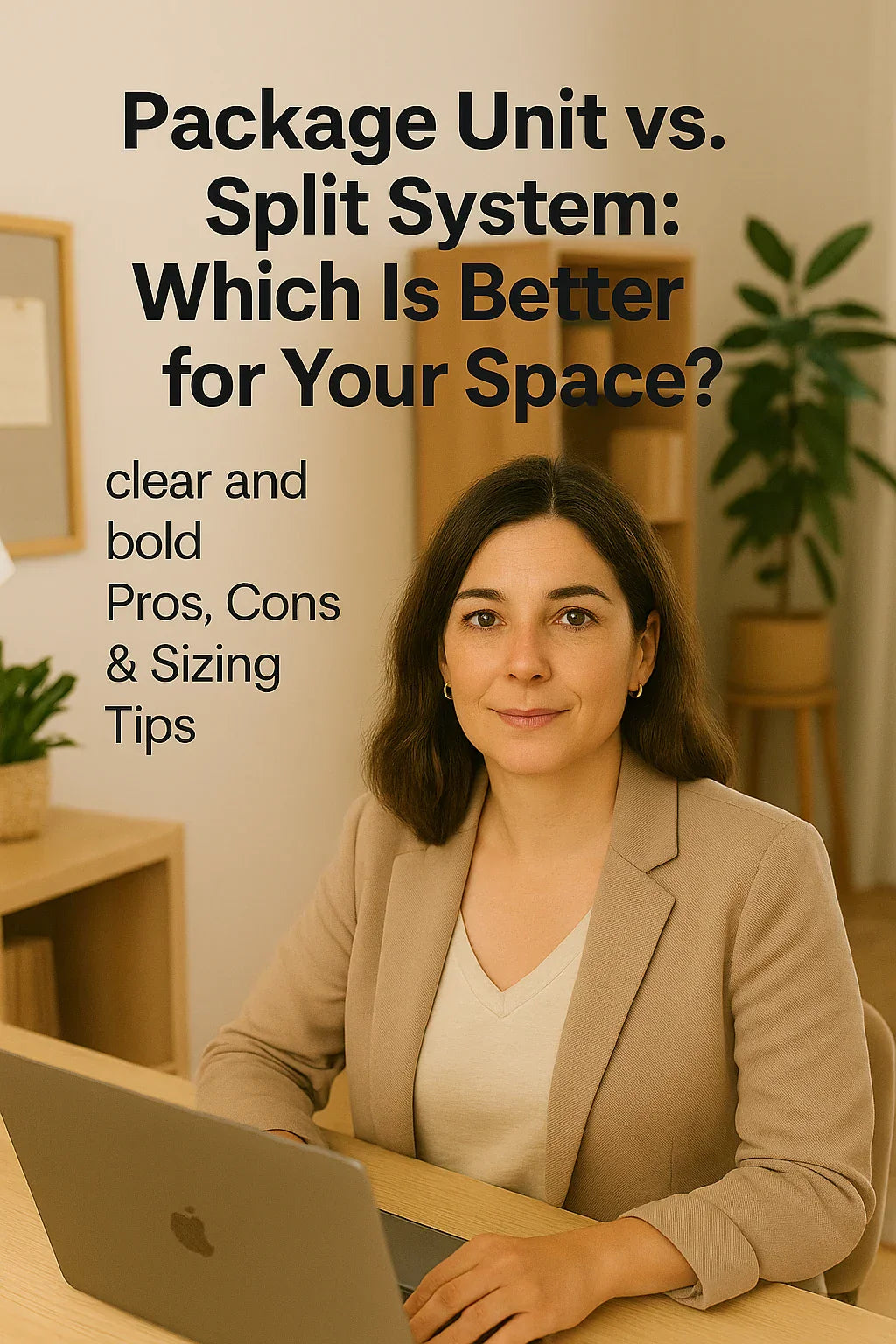🏠 Understanding Package and Split HVAC Systems
Package Unit: All heating and cooling components are in a single outdoor cabinet, connecting directly to the home’s ductwork.
Split System: The system is divided into an outdoor condenser and an indoor air handler or furnace with coil, connected via refrigerant lines.
Energy Star explains HVAC system differences for homeowners.
🪴 Pros of Package Units
✅ Space-saving with no indoor equipment.
✅ Faster, simpler installation.
✅ Easier maintenance access.
✅ Ideal for homes without basements or with limited indoor space.
✅ All-in-one design can be less expensive to install initially.
Carrier offers an overview of package unit benefits.
🏡 Pros of Split Systems
✅ Higher potential energy efficiency (more high-SEER options).
✅ Quieter operation indoors, as the noisy parts remain outside.
✅ Easier to upgrade or repair components individually.
✅ Flexible placement of indoor units (attic, basement, closet).
✅ Can be paired with advanced air quality systems.
Trane explains these system differences in practical homeowner terms.
💰 Cost Comparison
Package Units:
-
Lower installation costs ($2,500 – $7,500 installed).
-
Slightly higher maintenance frequency due to outdoor exposure.
Split Systems:
-
Equipment + install typically ranges from $4,500 – $10,000.
-
Potential for lower operating costs if higher SEER models are used.
-
May require additional indoor space.
🔇 Noise Levels
-
Package Units: May generate more noise outside near living spaces.
-
Split Systems: Quieter indoors, with only the air handler operating inside.
🌡️ Energy Efficiency
-
Split Systems generally offer higher SEER ratings (up to 26 SEER in some models).
-
Package Units typically max around 14.3 – 17 SEER.
If maximizing energy efficiency is your goal, a split system may be more beneficial long-term.
🛠️ Maintenance and Lifespan
-
Package Units: Easier to access but exposed to weather, requiring regular coil cleaning and inspections.
-
Split Systems: Protected indoor components can reduce weather-related wear.
Both systems can last 12–20 years with proper maintenance.
HVAC maintenance and lifespan expectations.
🏘️ Which System Is Right for Your Home?
✅ Choose a Package Unit if:
-
You have limited indoor space.
-
You need quick, lower-cost installation.
-
Your climate is moderate, and outdoor exposure is manageable.
-
You’re replacing an existing rooftop or ground package unit.
✅ Choose a Split System if:
-
You have space for indoor components.
-
You prioritize maximum efficiency and comfort.
-
You want quieter operation inside your home.
-
You plan on advanced zoning or air quality system upgrades.
🏁 Final Thoughts
Both package and split HVAC systems offer reliable heating and cooling, but your decision should consider:
-
Home layout and space availability.
-
Climate and weather exposure.
-
Budget for installation vs. long-term efficiency savings.
-
Noise tolerance near outdoor living spaces.
For many homeowners, split systems are ideal for efficiency, while package units offer simplicity and space-saving convenience.
In the next article we will know more about: Do Package Units Qualify for Energy Tax Credits? 2025 Guide







